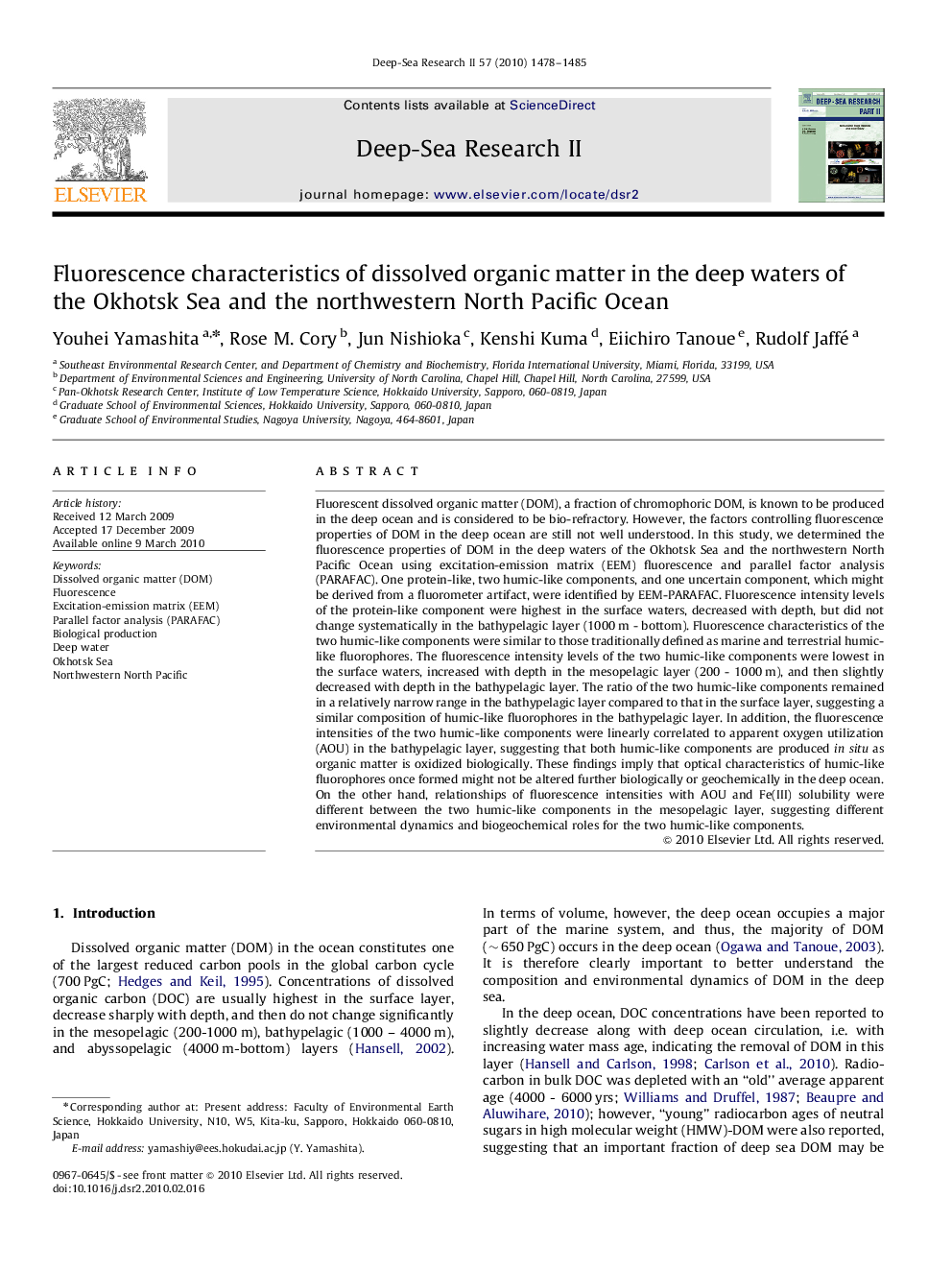| کد مقاله | کد نشریه | سال انتشار | مقاله انگلیسی | نسخه تمام متن |
|---|---|---|---|---|
| 4537024 | 1326347 | 2010 | 8 صفحه PDF | دانلود رایگان |

Fluorescent dissolved organic matter (DOM), a fraction of chromophoric DOM, is known to be produced in the deep ocean and is considered to be bio-refractory. However, the factors controlling fluorescence properties of DOM in the deep ocean are still not well understood. In this study, we determined the fluorescence properties of DOM in the deep waters of the Okhotsk Sea and the northwestern North Pacific Ocean using excitation-emission matrix (EEM) fluorescence and parallel factor analysis (PARAFAC). One protein-like, two humic-like components, and one uncertain component, which might be derived from a fluorometer artifact, were identified by EEM-PARAFAC. Fluorescence intensity levels of the protein-like component were highest in the surface waters, decreased with depth, but did not change systematically in the bathypelagic layer (1000 m - bottom). Fluorescence characteristics of the two humic-like components were similar to those traditionally defined as marine and terrestrial humic-like fluorophores. The fluorescence intensity levels of the two humic-like components were lowest in the surface waters, increased with depth in the mesopelagic layer (200 - 1000 m), and then slightly decreased with depth in the bathypelagic layer. The ratio of the two humic-like components remained in a relatively narrow range in the bathypelagic layer compared to that in the surface layer, suggesting a similar composition of humic-like fluorophores in the bathypelagic layer. In addition, the fluorescence intensities of the two humic-like components were linearly correlated to apparent oxygen utilization (AOU) in the bathypelagic layer, suggesting that both humic-like components are produced in situ as organic matter is oxidized biologically. These findings imply that optical characteristics of humic-like fluorophores once formed might not be altered further biologically or geochemically in the deep ocean. On the other hand, relationships of fluorescence intensities with AOU and Fe(III) solubility were different between the two humic-like components in the mesopelagic layer, suggesting different environmental dynamics and biogeochemical roles for the two humic-like components.
Journal: Deep Sea Research Part II: Topical Studies in Oceanography - Volume 57, Issue 16, 15 August 2010, Pages 1478–1485